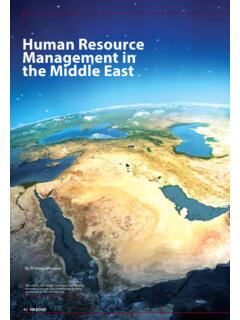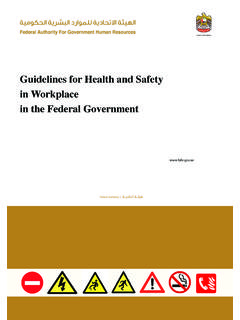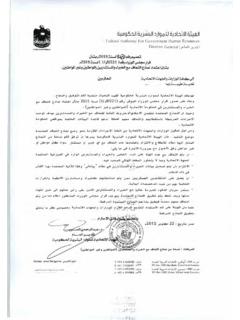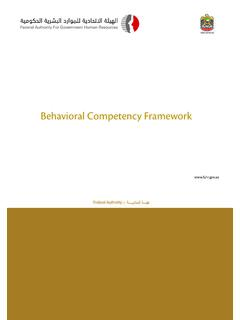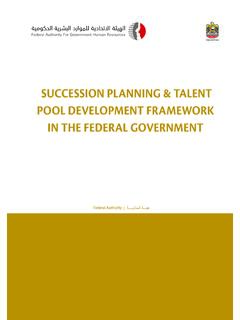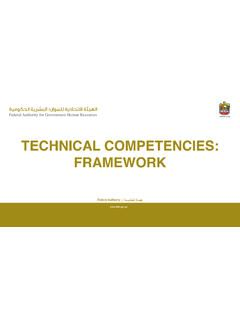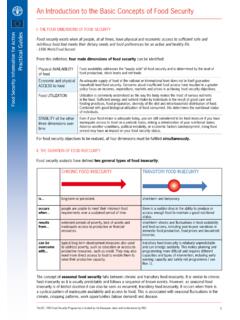Transcription of Adaptive Leadership
1 By: Jeffrey Chua, Martin Reeves, Michael Shanahan, andRoselinde TorresThis article is printed with permission from The Boston Consulting Group BCG | Copyright and all intellectual property are reserved for The Boston Consulting Group BCGHR ECHO38 Adaptive Leadership A Critical Capabilityfor the Public SectorWe commonly think of leaders as strong personalities who have a vision and set the course for the organizations they lead. But leaders increasingly find this view lacking. In his essay The Globally Integrated Enterprise ( ), Sam Palmisano, Chairman of IBM, explained Hierarchical, command-and-control approaches simply do not work anymore.
2 They impede information flows inside companies, hampering the fluid and collaborative nature of work today. This observation is particularly true for public-sector organizations in today s environment, which encourages leaders to be both averse to risk and highly responsive to change. Public-sector leaders often work against a backdrop of unexpected political and policy changes and crises. In addition, their roles may be further constrained by the term limits they face as political appointees or elected officials. Their organizations also face pressure to offer increasingly complex services and to adapt to new technologies all while subject to high levels of public accountability and scrutiny.
3 A traditional command-and-control approach ignores the realities of the current climate and the needs of teams that often remain long after politics and policy have left their ECHO39 Our research and experience suggest that the fundamental shifts in today s environment compel us to rethink the nature of strategy, organization, and consequently, the following trends:Turbulence and uncertainty have undermined the effectiveness of long-range forecasting and traditional strategic can leaders chart a course when they can't predict the outcomes of their choices?Government agencies are increasingly interdependent and often have overlapping missions or boundaries are blurred, who leads whom?The pervasiveness of digital communication and technology has made every organization an information such an environment, how can leaders ensure that their organizations are reading the right signals and acting on them?
4 The pressure on public services is intensifying as populations age, expectations rise, and resources become more can leaders build up society s trust in public organizations? How can they harness the creativity and passion of the workforce to deliver more from the same resources?Some environments are mature and predictable, while others are highly do leaders ensure that they are taking the right approach or the right mosaic of approaches for the specific challenges at hand? These shifts call for Adaptive strategies and organizations, and they require leaders to become Adaptive as well. Adaptive leaders create conditions that engage employees at all levels of the organization and enable them to achieve common goals particularly in an environment of of Adaptive Leadership There are four dimensions to Leadership that distinguish the Adaptive Leadership model from more traditional Leadership models: navigating a new environment; leading with empathy.
5 Learning through self-correction, and creating win-win leaders must embrace uncertainty and adopt new approaches if they are to chart a course amid today s turbulent ECHO40 Adaptive Leaders Must Strenghthen Their Capabilities Across Four New DimensionsW in and winE mpathizeN avigateS elf-correctSource: BCG Leadership DifferentiatorsHR ECHO41 Navigating the New Mandela once said, The ways in which we will achieve our goals are bound by context, changing with circumstances even while remaining steadfast in our commitment to our vision. Adaptive leaders must embrace uncertainty and adopt new approaches if they are to chart a course amid today s turbulent conditions. Manage the context in which actors interact, not the rule book.
6 Amid uncertainty, rigid rules can be counterproductive as they often force managers and frontline workers to be driven by compliance rather than results . The Adaptive leader sets priorities and objectives and makes managers and frontline workers responsible and accountable for achieving those desired outcomes. In the education sector, for example, some of the strongest-performing school systems handed responsibility for the performance of individual schools to their principal or school leader, empowering them to make decisions based on the particular needs of their school and its students. Cultivate a diversity of perspectives to generate a multiplicity of options. Traditional models of Leadership may emphasize compliance, but Adaptive Leadership styles de-emphasize hierarchy and make dissenting opinion compulsory.
7 Adaptive leaders take into account the perspectives of workers, who are responsible for delivering frontline public services and are most likely to raise critical questions about external realities. Allow Leadership to be shared and to emerge from the given context. In a volatile world, no single person can lead at all times and in all situations. The role of the leader should be assumed by the person that is in the best position to guide or make the public sector, a model of shared Leadership should be considered as well, particularly for divisions or departments with politically appointed Leadership . This type of model promotes consistency and allows for changes to become fully realized. HR ECHO42 Adaptive leaders take into account the perspectives of workers, who are responsible for delivering frontline public services and are most likely to raise critical questions about external realities.
8 Constantly question the world around you. Adaptive leaders are always looking outward and realigning their organizations with the shifting environment. They read between the lines, intuitively grasp patterns that may be masked by complexity, and test their own assumptions by running through what if with EmpathyAdaptive leaders create a shared sense of purpose and manage through influence rather than command and control. See the world through the eyes of others. By understanding alternative perspectives, Adaptive leaders cultivate and embrace the cognitive diversity that underpins Adaptive organizations. Their ability to empathize with colleagues and other stakeholders enables them to exert influence across boundaries.
9 By seeing the world through the eyes of others, these leaders also extend their ability to see patterns in a complex environment. Create a shared sense of purpose. Relative to private-sector companies, public-sector organizations have an amplified emphasis on mission since their critical focus is serving the public, and this must be reflected in the shared values of everyone in the organization. Adaptive leaders identify the shared purpose and work out how to harness it and empower employees to deliver results . For example, the crime division of a state police department wanted to be able to solve crimes more quickly and needed to be more agile and more able to rapidly reallocate the police resources assigned to particular crimes or threats at a given moment.
10 To do this, many police officers in the division needed to develop a more generalist skill set rather than deep specialization in particular types of crimes. The challenge was getting everyone in the department to change their mindset and focus on the goals of the department rather than the goals of the squad or specialized unit. Reward accomplishment with autonomy. Adaptive leaders reward people for what they accomplish, rather than tracking Creating Win-Win Solutions. Adaptive leaders focus on sustainable success for both the organization as well as its external network of ECHO43hours or tasks. Public-sector leaders must motivate employees with nonfinancial rewards, such as giving employees time to pursue causes that are of interest to them and that further the mission of the organization.
